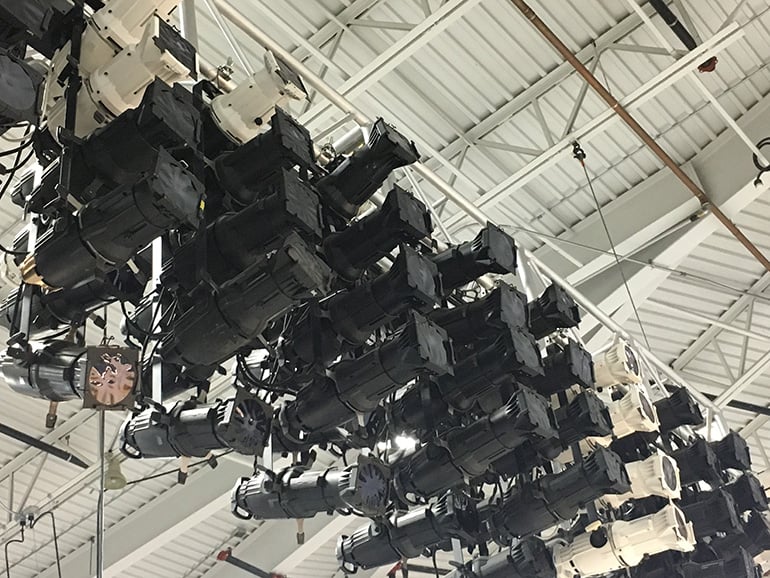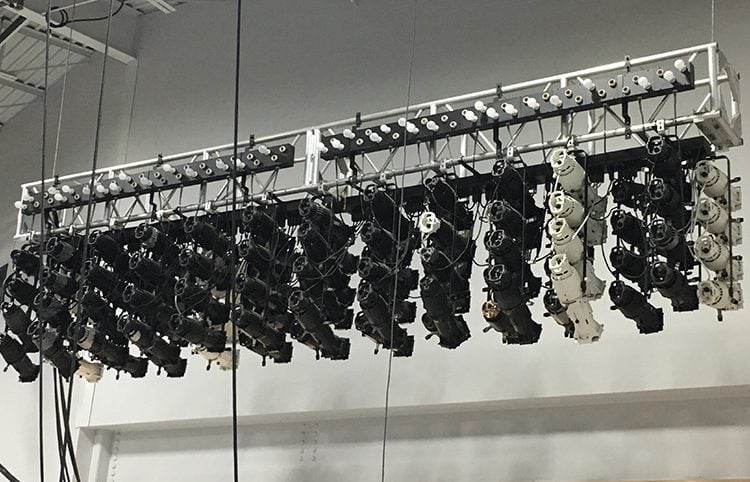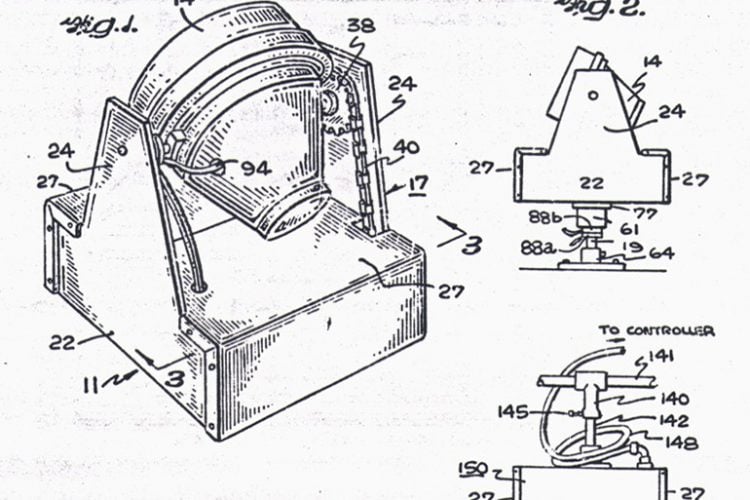When you manufacture some of the highest voltage power racks in the world, how do you go about safely testing their load limits? With a monstrosity of lighting fixtures and miles of cables.
If you walk into the factory at the ETC headquarters building, take a left, walk a few hundred feet and look up. There you’ll find such a rig hanging peacefully, 20 feet in the air. This is ETC’s power test rig and it’s been helping validate the safety of the power panels in your electrical rooms for decades.
This rig helps test the thermals and performance on every power product ETC develops including Echo Relay Panels, Sensor Dimmer Racks, Sensor IQ Panels, and Unison Dimmer Racks. The rig is made up of just over 100 Source Four incandescent luminaires and lamp wattage and voltage are changed depending on the tests running at the time.

In the early 90’s when Sensor Dimmer Racks first launched and years before ETC was in the current headquarters building, a test rig was created to send 800 A to each of the three phases of a Sensor Dimmer Rack as part of the large-scale test plan. This test rig was too large and generated too much heat to be inside the building. So it was constructed in the parking lot and consisted of a bank of rented 1000 W PAR cans.
We’ve since downsized a bit. The current setup accommodates 400 A per phase at 120/208 V. The heaviest loads ever connected were for the Sensor 48 Sinewave dimming rack and the Sensor IQ breaker panel. In both cases, nearly the entire bank of fixtures was used. There was some concern that the heat generated from the test rig, when running at full power, might melt the wax in the sprinkler heads and flood the building. Thankfully that was quickly proven to be a non-issue.
And you better believe that when you draw that much electricity, the power company will notice. ETC engineers have worked out an agreement with the local power company to only test when city power usage is low – this means product testing comes to a complete halt during the hottest summer days.
To read more about the power control options ETC offers, visit our Power Controls page.





